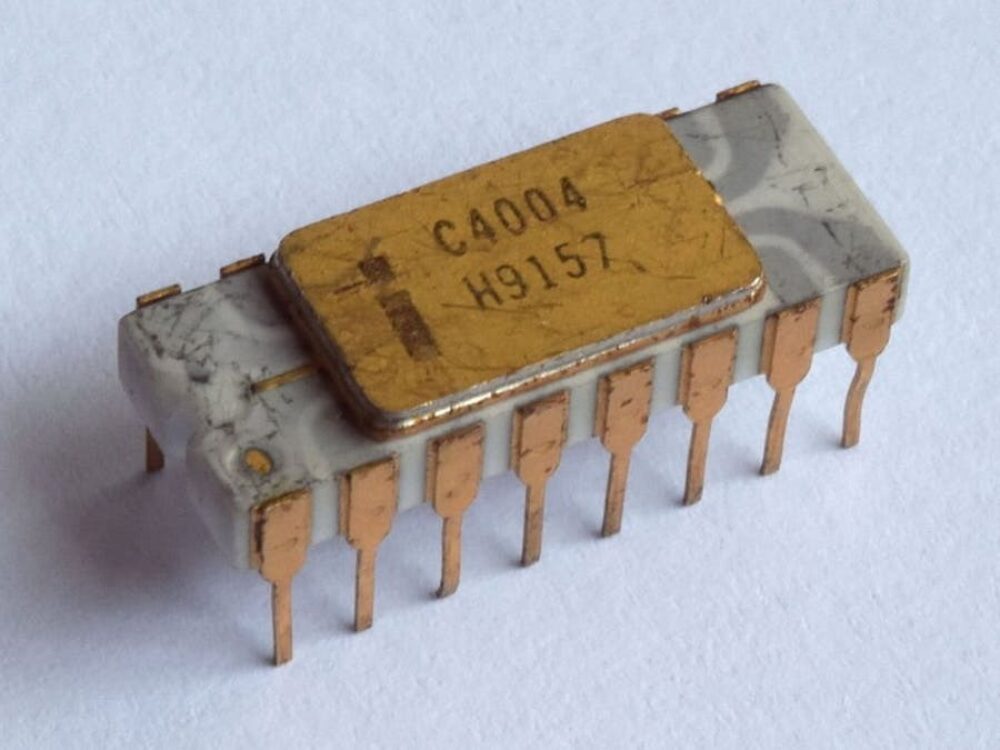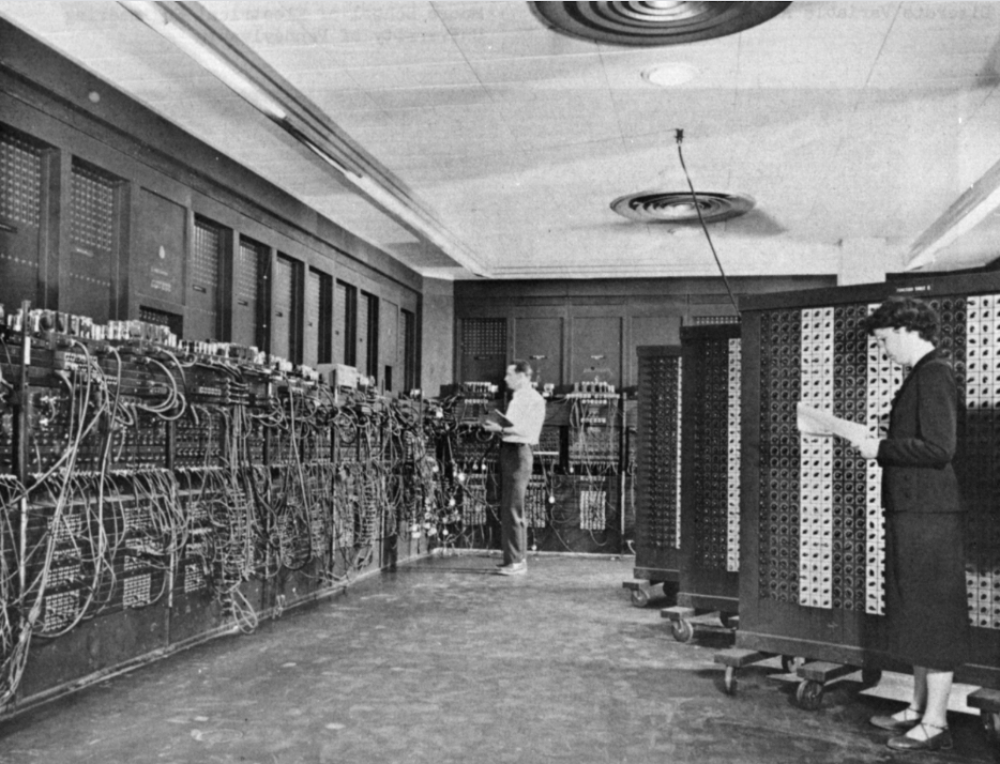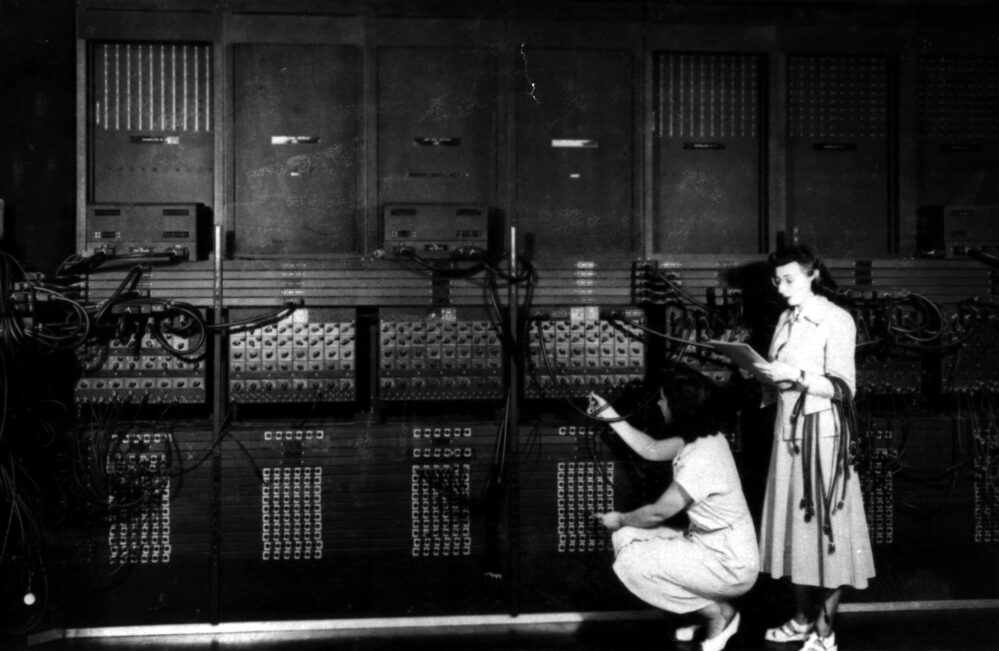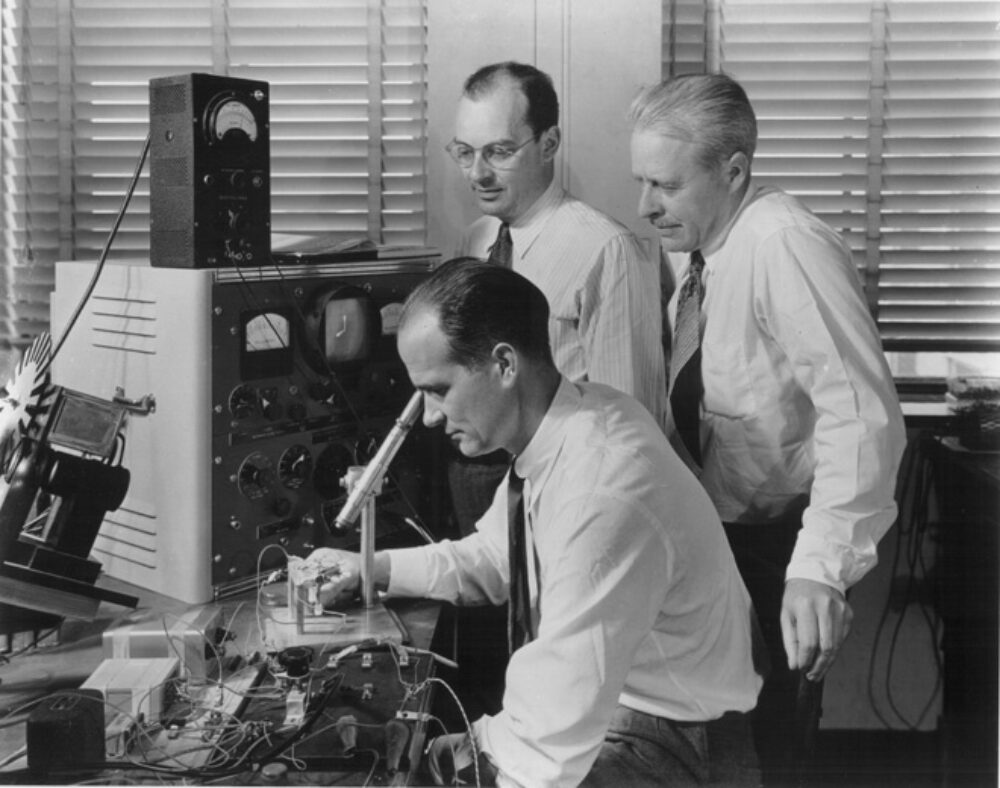Following in the footsteps of digital computing
In the annals of computing history, the journey from mechanical computing to digital computing stands as a testament to human ingenuity and technological advancement. Early computers were behemoths, driven by gears, levers, and cams, while modern computers fit in our pockets and power data centers. SEEQC, a pioneering company in the quantum computing arena, is now taking a page from this playbook to scale quantum computers and usher in the quantum age.
A Glimpse into the Mechanical Age
In the early days of computing, machines were massive and relied on intricate mechanical components. These early contraptions used physical mechanisms to perform calculations and automate specific tasks. Imagine gears, levers, and cams intricately moving to process information.
One of the pivotal moments in computing history came in 1946 with the birth of the digital computer. The Electronic Numerical Integrator and Computer (ENIAC) marked the first fully electronic digital computer. While it occupied an entire floor, weighed over 30 tons, and spanned 30 feet in length, 10 feet in height, and 3 feet in width, it represented a monumental leap forward.
ENIAC's Complexities and Challenges
ENIAC was a marvel of engineering, boasting over 17,000 vacuum tubes and 70,000 resistors, capacitors, and inductors, all interconnected by high-grade military wiring stretching over a mile and a half. It was a labyrinth of cables and components.
Programming the ENIAC was a physically intensive process, with manual setup and adjustments required for each computation. This made programming a laborious task.
ENIAC was a power-hungry behemoth, consuming about 150 kilowatts of electricity. This voracious appetite for power generated significant heat, necessitating intricate cooling systems to prevent overheating.
Vacuum tubes, the workhorses of ENIAC, were prone to failures, demanding time-consuming replacements.
Advancements in Digital Computing
Despite these challenges, ENIAC was significantly faster than its mechanical predecessors. It could perform 5,000 additions, 300 multiplications, or 100 divisions in a single second—an astonishing feat at the time.
The transition from mechanical machines to digital computers marked a turning point in computing history. Digital computing was on the rise, but it required a series of transformative advancements to reach its full potential.
The Birth of Transistors
In 1947, Bell Laboratories introduced the transistor, revolutionizing electronic devices. Transistors replaced the bulky, power-hungry vacuum tubes with small, efficient semiconductor components. They were more reliable, energy-efficient, and compact, laying the foundation for further innovations in computing.
Integrated Circuits and Miniaturization
Building on the transistor's success, the late 1950s and early 1960s witnessed the emergence of integrated circuits. These tiny marvels combined multiple transistors, resistors, and capacitors on a single semiconductor chip. This breakthrough allowed for the creation of complex electronic circuits in a compact and efficient manner.
Integrated circuits revolutionized electronics by enabling miniaturization, increased functionality, and reduced costs.
The Era of Microprocessors
The pinnacle of these advancements arrived in the early 1970s with the invention of the microprocessor at Intel Corporation. A single chip integrated all the critical components of a central processing unit (CPU). This microprocessor served as the brain of a computer, executing instructions and performing calculations. It ushered in the era of small, powerful, and affordable computers.

The Impact of Microprocessors
Microprocessors transformed industries, making computers more accessible, efficient, and versatile. Their influence extended beyond traditional computing, revolutionizing fields like communications, automotive, healthcare, and entertainment. Moore's Law, reflecting the continuous advancement of microprocessors, led to increased processing power, improved energy efficiency, and the ubiquitous computing devices we use today, from smartphones to supercomputers.
Quantum Leap into the Future
While digital computers continue to dominate, they face limitations dictated by classical physics—constraints on size and miniaturization. To achieve exponential growth, a shift in the underlying physics is imperative. Quantum mechanics provides the answer.
Entering the Quantum Age
Quantum mechanics, governing the behavior of matter and energy at atomic and subatomic scales, holds the key to a new era of computing—the quantum age.
Quantum computers leverage the principles of quantum mechanics to perform computation. They utilize quantum bits or qubits, which can exist in multiple states simultaneously, thanks to phenomena like superposition and entanglement. Quantum computers have the potential to tackle immense problems that classical computers cannot.
Building a Quantum Computer
Today's most advanced quantum computers, while promising, share similarities with ENIAC. Companies like SEEQC and others have developed functional quantum computers. However, scaling them poses challenges akin to those faced in the early days of digital computing.
For quantum computing to realize its full potential, it requires its own set of transformative milestones, just as digital computing did.
What Does Scalability Entail?
Scalability in quantum computing encompasses several crucial factors:
- Per Modality: Quantum computing spans various modalities, each with unique advantages and disadvantages. SEEQC focuses on superconducting qubits, which require extremely low temperatures to operate efficiently.
- Size: Quantum computers must overcome size limitations to become practical and accessible.
- Energy Consumption: Efficiency is paramount, and energy consumption must be optimized.
- Cables and Error-Prone Elements: Reducing complexity and eliminating error-prone components are essential.
- Control Systems: Developing control systems that work seamlessly at room temperature presents a significant challenge.
SEEQC's Innovative Approach
SEEQC offers a distinctive approach to quantum computing. By skipping certain intermediate steps and accelerating progress, they aim to transform quantum computing from its current state, akin to the early digital era, into a modern, efficient, and scalable technology.
SEEQC's achievements thus far have yielded promising results, surpassing conventional benchmarks. Their system is not only energy-efficient but also modular, allowing even intermediate progress to be harnessed effectively. SEEQC's journey aligns with the broader race to develop fault-tolerant quantum computers.
These groundbreaking chips are designed, manufactured, and tested in SEEQC's vertically integrated labs, signifying a hands-on approach to advancing quantum computing.
The SEEQC Revolution
In the trajectory from mechanical computing to digital computing, human ingenuity prevailed, leading to monumental advances in technology. SEEQC, drawing inspiration from this historical evolution, is propelling quantum computing into the future.
As quantum computers transition from their early stages to maturity, SEEQC's innovative approach promises to overcome challenges and pave the way for the quantum age. Quantum computing, with its vast potential, has the power to address some of the world's most pressing problems, making SEEQC's journey a pivotal chapter in the history of computing.




